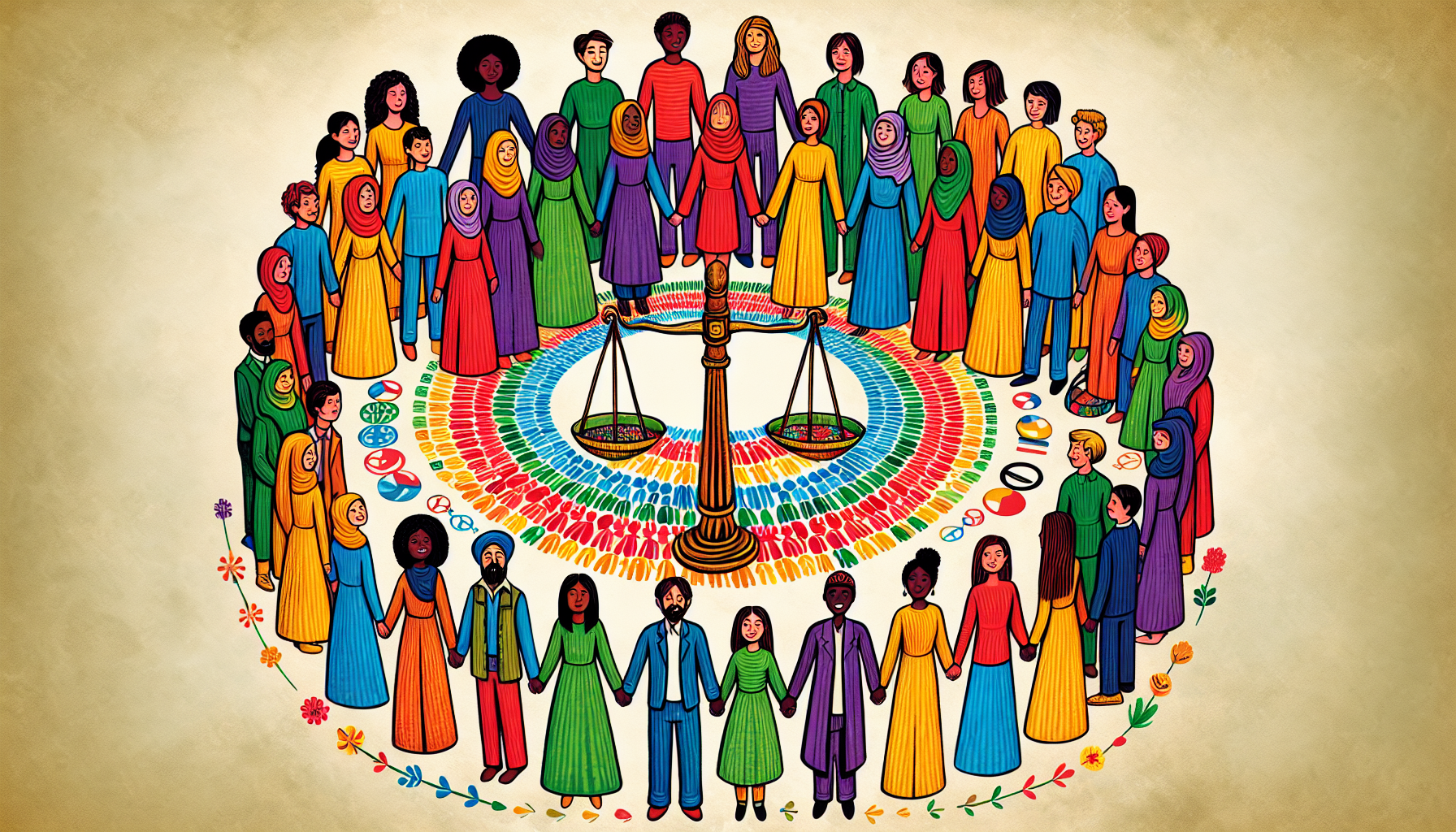I hope you enjoy reading this blog post.
If you want to represent yourself Equal Employment Opportunity Commission (EEOC), these blogs and our guide will help you be successful and get the justice you are looking for.

Discrimination and protected classes are central to workplace equality. Protected classes, such as those based on race, sex, and disability, are groups legally shielded from discrimination. Knowing these protections is critical. This article covers the legal definition of protected classes, key laws against discrimination, and recent developments in these areas.
Key Takeaways
Discrimination occurs when individuals experience adverse actions based on their membership in protected classes, which are defined by state and federal laws.
Key federal laws such as the Civil Rights Act of 1964, ADEA, and ADA prohibit employment discrimination and mandate reasonable accommodations for affected individuals.
The understanding of protected classes is evolving, with recent developments extending protections to sexual orientation, gender identity, and pregnancy-related conditions.
Info in this Blog
Defining Discrimination and Protected Classes
Employment discrimination happens when individuals face adverse actions due to their membership in a protected class. These classes are groups identified under state and federal laws, designed to protect against discrimination and ensure equal workplace opportunities.
Historically, race and color were among the earliest recognized protected classes in federal law. Over time, this concept has evolved to include various groups at risk of discrimination, such as national origin, sex, and religion. Title VII of the Civil Rights Act of 1964 is a pivotal law that prohibits discrimination based on these characteristics. Violations of these anti-discrimination laws may occur if employment decisions are based on an individual’s status in a protected class.
Protected classes may expand through court rulings or new federal laws. Recent changes, for instance, have added protections for sexual orientation and gender identity. Grasping the scope and evolution of these classes is key to recognizing and combating workplace discrimination.
Key Federal Laws Protecting
Against Employment Discrimination

Several federal laws protect employees from unfair treatment based on characteristics like race, age, and disability. These laws prevent employment discrimination and ensure fair treatment for all. Notable examples include the Civil Rights Act of 1964, the Age Discrimination in Employment Act (ADEA), and the Americans with Disabilities Act (ADA).
Beyond prohibiting discrimination, these laws mandate that employers accommodate their employees’ needs. Here’s a closer look at the specifics and impacts of each foundational law.
The Civil Rights Act of 1964
The Civil Rights Act of 1964 is a landmark law prohibiting employment discrimination based on race, color, religion, sex, and national origin. Title VII is especially significant, protecting religious observance and practices. Employers must reasonably accommodate religious practices, which might involve granting leave or adjusting work schedules under federal civil rights laws.
Title VII also established the Equal Employment Opportunity Commission (EEOC), which enforces anti-discrimination laws. The EEOC investigates complaints, conducts outreach and education, and can file lawsuits to address violations, ensuring employees have a mechanism to seek justice.
The Age Discrimination in Employment Act (ADEA)
The Age Discrimination in Employment Act (ADEA) protects workers aged 40 and older from age-based discrimination. This law, applicable to employers with 20 or more employees, ensures older workers are treated fairly in hiring, promotions, compensation, and other employment decisions.
Recognizing the value of older workers’ experience and skills, the ADEA aims to prevent age-related biases. By protecting individuals aged 40 and above, the ADEA fosters an inclusive workplace where all employees can thrive.
The Americans with Disabilities Act (ADA)
The Americans with Disabilities Act (ADA) is a vital law preventing discrimination against individuals with disabilities, particularly in employment. Employers with 15 or more employees must provide reasonable accommodations to qualified individuals, ensuring equal workplace opportunities.
Accommodations might involve modifying work environments or job duties, allowing individuals with disabilities to perform essential functions. The ADA’s focus on reasonable accommodations shows a commitment to inclusivity and equal employment opportunities for all.

Free FlowChart to Make Sure you Understand the Process!
Expanding Protections: Executive Orders and Additional Legislations
Executive orders and additional legislation have expanded protections beyond foundational federal laws. These measures address gaps and introduce new safeguards, ensuring a comprehensive approach to preventing discrimination.
Examples include Executive Order 11246, the Genetic Information Nondiscrimination Act (GINA), and the Uniformed Services Employment and Reemployment Rights Act (USERRA). These laws extend protections to federal contractors, individuals with genetic predispositions, and servicemembers.
Executive Order 11246
Executive Order 11246 prohibits employment discrimination based on race, color, religion, sex, sexual orientation, gender identity, and national origin. It mandates affirmative action and requires contractors to implement written equal opportunity policies. The Office of Federal Contract Compliance Programs (OFCCP), part of the Department of Labor, administers this order.
Federal agencies must also maintain an affirmative program of equal employment opportunities under this order, broadening protections and ensuring federal contractors uphold nondiscrimination and affirmative action principles.
The Genetic Information Nondiscrimination Act (GINA)
The Genetic Information Nondiscrimination Act (GINA) prohibits discrimination based on genetic information, including family medical history. It ensures individuals are not treated unfairly due to genetic predispositions to certain health conditions.
GINA restricts employers from making decisions about hiring, firing, or promotions based on genetic information, protecting employees’ privacy and ensuring fair treatment.
The Uniformed Services Employment and Reemployment Rights Act (USERRA)
The Uniformed Services Employment and Reemployment Rights Act (USERRA) protects job rights for individuals who leave their employment to serve in the military. It ensures servicemembers can return to their civilian jobs with the same seniority, status, and pay as if they had never left.
This law covers all civilian employers, including federal, state, local, and private entities, ensuring broad protection for servicemembers across various employment contexts.
Harassment and Hostile Work Environments
A hostile work environment arises from discriminatory behavior creating an abusive setting for the victim. Employers are liable for employee harassment that contributes to such an environment, highlighting the need for effective anti-harassment policies.
Sexual harassment evidence can support claims of a hostile work environment under Title VII, covering non-economic harms like name-calling or inappropriate touching. Generally, multiple incidents are needed to meet the severe or widespread standard.
An effective anti-harassment policy should clearly define unacceptable behavior and include a structured complaint process to protect reporting employees.
Recent Developments in Protected Class Definitions
The understanding of protected classes is evolving, with courts and new legislation expanding these definitions. Recent developments include protections for sexual orientation, gender identity, and pregnancy-related conditions, reflecting a broader understanding of discrimination.
This evolving landscape requires individuals and organizations to stay informed about federal and state-specific laws. Recognizing and adapting to these changes is crucial for effectively addressing discrimination-related issues.
Sexual Orientation and Gender Identity
The Supreme Court’s Bostock v. Clayton County ruling confirmed that discrimination based on sexual orientation or gender identity is covered by Title VII. This landmark decision categorized such discrimination as sex discrimination, significantly expanding workplace protections.
The ruling underscores the importance of inclusive policies and practices that respect the rights of individuals regardless of their sexual orientation or gender identity.
Pregnancy and Related Medical Conditions
Pregnancy, childbirth, and related medical conditions are recognized as sex discrimination under Title VII. The Pregnant Workers Fairness Act mandates employers provide reasonable accommodations for workers affected by pregnancy-related conditions or physical or mental impairment, ensuring their health and well-being.
Accommodations may involve modifying work duties, schedules, or environments, reflecting a commitment to supporting employees through significant life events.
State-Specific Protections
State laws may create additional protected classes beyond federal laws, varying significantly by state. For instance, some states have introduced protections based on marital status, sexual orientation, or gender identity.
Employers must comply with state-specific protections, even if they operate primarily under federal law. Local jurisdictions often have their own anti-discrimination laws, adding another layer of protections not covered at the state or federal level, creating a complex legal landscape.
Enforcement of Anti-Discrimination Statutes
Enforcing anti-discrimination laws is crucial for ensuring compliance and protecting individuals’ rights. The Equal Employment Opportunity Commission (EEOC) plays a central role in this process, enforcing federal laws that prohibit workplace discrimination. State laws may establish stricter enforcement mechanisms and penalties compared to federal standards.
Training all employees, including Human Resources managers, on equal employment opportunity (EEO) laws and implementing a robust EEO policy endorsed by upper management are crucial steps for compliance.
Role of the Equal Employment Opportunity Commission (EEOC)
The EEOC enforces federal anti-discrimination laws in the workplace. It investigates and resolves discrimination claims and can file lawsuits if necessary. If conciliation fails, the EEOC may refer cases to the Department of Justice for further action.
Besides investigations, the EEOC engages in outreach and education to prevent discrimination, fostering a more inclusive work environment. Its determination that sexual orientation discrimination violates Title VII underscores its commitment to comprehensive protections.
Other Federal Agencies and Bodies
In addition to the EEOC, other federal agencies also play critical roles in protecting against discrimination. The Office of Special Counsel protects federal employees from prohibited personnel practices, while the Merit Systems Protection Board safeguards their rights. These agencies ensure federal employees are not subjected to unfair treatment or retaliation for exercising their rights.
These additional protections highlight the federal government’s commitment to creating and maintaining a fair workplace for all employees, regardless of background or status.
Conclusion
Understanding and adhering to anti-discrimination laws is essential for creating a fair and equitable workplace. From the foundational protections of the Civil Rights Act of 1964 to the specific safeguards of the ADEA and ADA, federal laws provide a robust framework against employment discrimination. Executive orders and additional legislation further expand these protections, ensuring that various groups are not unfairly treated in the workplace.
Employers play a critical role in upholding these laws through effective policies, training programs, and affirmative action plans. By staying informed about both federal and state-specific protections, organizations can better navigate the complexities of anti-discrimination laws and foster an inclusive work environment.
Ultimately, promoting equality and preventing discrimination benefits everyone. It helps build a workplace where all employees, regardless of their background or status, can contribute meaningfully and reach their full potential. Together, we can work towards a more just and equitable society.
Frequently Asked Questions
What is employment discrimination?
Employment discrimination is defined as actions taken against individuals because of their membership in a protected class, including categories such as race, age, or disability. This practice is fundamentally unjust and undermines equality in the workplace.
What are protected classes?
Protected classes are specific groups identified by state and federal laws that are shielded from discrimination based on characteristics such as race, color, national origin, sex, and religion. Understanding these classifications is essential to ensure equitable treatment and uphold the principles of non-discrimination.
What is the role of the Equal Employment Opportunity Commission (EEOC)?
The Equal Employment Opportunity Commission (EEOC) enforces federal anti-discrimination laws in the workplace, investigates complaints, and can initiate lawsuits when necessary. Its role is crucial in promoting fair treatment and preventing discrimination in employment.
How does the ADA protect individuals with disabilities?
The ADA protects individuals with disabilities by requiring employers to provide reasonable accommodations, thereby ensuring equal opportunities in the workplace. This legislation promotes inclusivity and eliminates discrimination based on disability.
What protections does the Age Discrimination in Employment Act (ADEA) offer?
The Age Discrimination in Employment Act (ADEA) provides protections for workers aged 40 and above against discrimination in various employment decisions, including hiring, promotions, and compensation. This ensures that older employees are treated fairly in the workplace.
Do you want Justice in front of the EEOC
Get Started Today and make the moves necessary to take back your freedom and right the wrongs at your workplace.

About Brandon
A licensed attorney with over 10 years of experience – I’ve noticed a lack of support for people who want to represent themselves in court.
So, I’ve created video guides that will help you gain back control of some of the least predictable situations you could experience in your lifetime.
Employment law Guide
- Intro to EEOC
- Why EEOC Exists
- What Claims to File
- EEOC Complaint Process
- Types of Discrimination
- Protected Classes
- Employer Obligations
- Preparing to File
- Time Limits in EEOC
- The Right Place to File
- Online Filing System
Do You Want Justice In Front Of The EEOC
Get Started Today and make the moves necessary to take back your freedom and right the wrongs at your workplace.
EEOC Guides
- Benefits of Mediation
- Requesting Mediation
- Mediation Process
- When to Consider Mediation
- Assign to Investigator
- Working with the Investigator
- Role of Employer
- Timelines for Investigation
- Outcomes of Investigation
- Conciliation Process
- Reasonable Cause
- Settlements